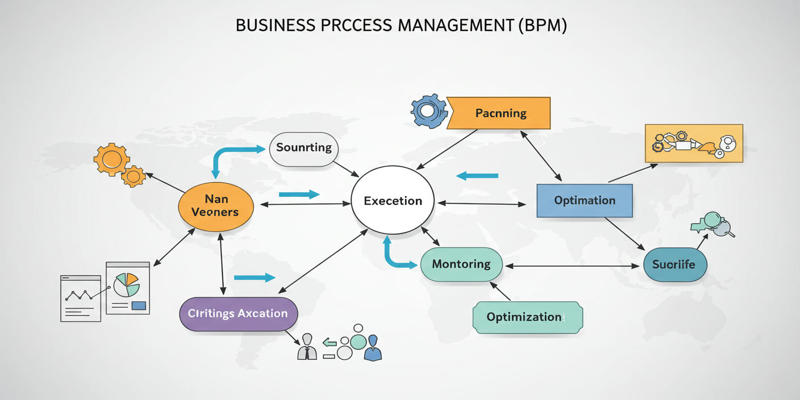Which Are The Best Ways to Automate OneDrive for Effortless File Management
Widely used cloud storage tool OneDrive lets users access, save, and handle files from anywhere. Manual file management can be a time-consuming and repetitious chore that results in clutter and disorganizing behavior. OneDrive automation can assist in saving time, boosting output, and stopping data loss. Users may simplify file management and guarantee that their data is constantly current by using several built-in tools and other resources.
Those who deal with a lot of files every day—people and companies alike—will find this very helpful. Automating OneDrive guarantees improved security, collaboration, and organization. This guide discusses six of the finest techniques for automating OneDrive so that simplification and quick file management can be achieved.

6 Best ways to automate OneDrive
Below are the six best ways to automate OneDrive, which will help you manage files effortlessly and improve organization with minimal manual effort.
Using OneDrive Folder Rules for Automatic Organization
Folder rules provide one of the simplest methods to automate OneDrive. This function lets users design rules that automatically group files depending on particular characteristics. Users may, for instance, create rules allowing specific kinds of files to be transferred straight away into specified directories. If a user works with documents regularly, they can set OneDrive to keep spreadsheets in one folder and Word files in another. It keeps everything orderly without calling for hand sorting.
Additionally, OneDrive folder rules are useful for separating personal and business information. If a user saves both professional and personal documents in OneDrive, automation can guarantee that office-related files enter a "Work" folder while personal files stay separate. This lessens clutter and makes file search easier when needed.
Syncing Files Automatically With Microsoft Power Automate
OneDrive file management can be managed by users building automated processes using the potent Microsoft Power Automate tool. Users of Power Automate can create automated systems to manage repetitious chores, including renaming, copying, and relocating files. For example, Power Automate can automatically save bills a user routinely gets by email in a certain OneDrive folder. It saves the requirement for downloading and organizing hand files. Triggering notifications helps Power Automate improve file management as well. Automation can alert several users whenever a file is changed if several users work on common files. It lets team members remain current on changes without personally reviewing files. Users can also design processes that coordinate files across OneDrive and other storage options.
Enabling Auto-Sync to Keep Files Updated Across Devices
The auto-sync tool of OneDrive guarantees that every file stays current on several devices. Users who operate from numerous locations or alternate between several devices find this especially helpful. Any modifications done to a file on one device are quickly updated on all other associated devices when auto-sync is turned on. It guarantees that users always have access to the most recent documents and reduces the possibility of working on antiquated versions of files. Though it is also found on Mac, Android, and iOS devices, Windows 10 and 11 have built-in auto-sync capability. Users of one drive need to log in and enable automatic syncing in the settings to activate auto-sync. Any file kept on OneDrive will immediately be updated across all linked devices once turned on.

Setting Up Automatic Backups for Data Protection
File backups help to stop data loss. Hence, OneDrive provides an automatic backup tool to guarantee that critical information is always safeguarded. For ongoing backup, users can choose particular folders, including the desktop, documents, and images. Once turned on, OneDrive will automatically save copies of certain files to the cloud, therefore lowering the risk of losing critical data resulting from hardware failures, inadvertent deletions, or system crashes. Version history—which lets users retrieve past versions of files—is another helpful tool for OneDrive backups. If a document is changed or inadvertently rewritten, users may easily restore an older edition. Companies that must monitor document changes across time will especially benefit from this. Automatic backups guarantee that files remain accessible even in the event of unanticipated data loss, therefore offering an additional degree of protection and peace of mind.
Automating File Sharing With Secure Links
Particularly for teams that regularly work, manually distributing files can be a time-consuming endeavor. Through safe links, OneDrive lets users automate file sharing, therefore streamlining this process. Users can create shareable links that give direct access to particular files or folders rather than personally forwarding documents over email. Customizing these links with expiration dates and modifying rights and access limits help to guarantee security. OneDrive can create and deliver a safe link automatically each month, for example, if a company must provide monthly reports to clients. It guarantees that receivers always have access to the most recent version of the file and eliminates the necessity to forward attachments personally.
Using Third-Party Integrations for Advanced Automation
OneDrive interacts with several other programs, such as Zapier and IFTTT, which enable even more automated file handling. These automation systems let users design processes to carry out particular chores without human involvement. Zapier, for instance, can automatically save email attachments to OneDrive, therefore preventing the loss of crucial records from an inbox. Likewise, IFTTT makes it simpler to arrange digital content by uploading social media images to a specific OneDrive folder. Third-party connectors let businesses also sync OneDrive with other cloud storage providers. If a user saves files on both OneDrive and Google Drive, an automated workflow can guarantee synchronous backup of files at both sites. It guarantees that data stays available even if one service runs across problems and offers further protection.
Conclusion:
Automating OneDrive guarantees key data stays safe, saves time, and improves file management. Easy file organization and updating depend on features including folder rules, Power Automate, and auto-sync. Further increasing efficiency are automatic backups, safe file sharing, and outside integrations. These instruments lower manual labor, stop data loss, and enhance teamwork. Automation maintains files in an orderly manner and makes them easily available across several devices for both personal and commercial use. Establishing these systems ensures that users can concentrate on critical work and be free from file management concerns.
On this page
6 Best ways to automate OneDrive Using OneDrive Folder Rules for Automatic Organization Syncing Files Automatically With Microsoft Power Automate Enabling Auto-Sync to Keep Files Updated Across Devices Setting Up Automatic Backups for Data Protection Automating File Sharing With Secure Links Using Third-Party Integrations for Advanced Automation Conclusion:Related Articles

Dark Web Monitoring Tools: Common Failures and Smarter Solutions

Best Markdown Converter Tools Bloggers Should Try for Easy Formatting

10 Must-Have Tools for Effective User Acceptance Testing

What is Business Process Management? A Guide to BPM

Top MPG to MP4 Converters for Effortless Video Conversion

How to Convert HEIC to JPEG Online Without Extra Apps or Programs

Which Are The 8 Best Database-Powered App Builders for Seamless Development

Which Are The Best Ways to Automate OneDrive for Effortless File Management

Top 10 WordPress Plugins for Collecting User Feedback

The Best Email Drip Campaign Software: Top Picks for Seamless Automation

Connecting Google Sheets to WordPress Seamlessly

 knacksnews
knacksnews